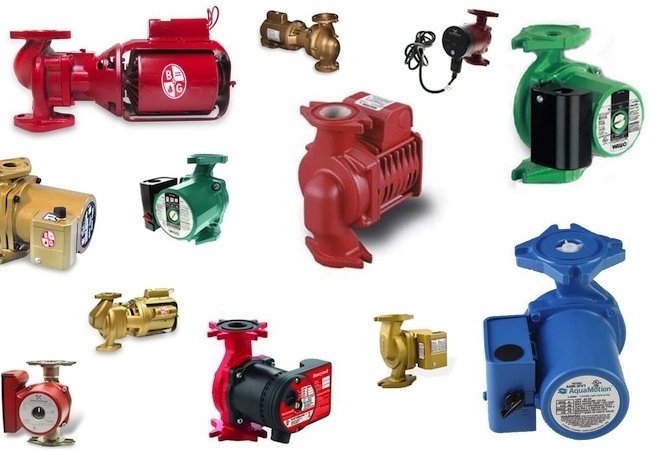We may earn revenue from the products available on this page and participate in affiliate programs. Learn More ›
Colder temperatures mean one thing: Winter looms on the horizon, so the time has come to make sure that your heating system remains in good working order. For a hydronic system, maintenance must include the circulator pump, as it’s essentially the “engine” of it all and arguably the single most important component.
Though other parts are more vulnerable to failure, circular pumps are by no means invincible. “A number of things can go wrong,” explains Daniel O’Brian, a technical expert from online retailer SupplyHouse.com. What types of problems should you look out for? Well, that depends on the design of the pump.
The main pump types are three-piece circulators and cartridge circulators. Of the two, three-piece circulators are more problematic. O’Brian says, “Three-piece circulators are more of an ‘old school’ style and have more replaceable parts, which need to be oiled on a regular basis, particularly at the start of each heating season.” Homeowners should listen for indications of a problem. “If it suddenly starts making odd or annoying noises, something may be off,” O’Brian says.

Cartridge circulators, meanwhile, are water-lubricated. “These do not require oil and have very few replaceable parts,” O’Brian says. “Cartridge circulators may need a new cartridge every now and again,” but there’s not often cause to replace the pump itself. For that reason, cartridge-type circulators have become standard.
If a homeowner sees the day when his circulator pump must finally be replaced, it can be a simple DIY. But choosing the right replacement pump requires an understanding of several factors:
• Different pumps feature different flow rates. Measured in gallons per minute (GPM), the flow rate of a pump refers to the maximum volume of water it can circulate at a given head range.
• The head range is the number of feet a pump can raise or lower a column of water at atmospheric pressure.
• In a closed-loop hydronic system, the circulator pump can be cast iron, because the water used is de-oxygenated to prevent rusting. By contrast, in an open-loop hydronic system, where there’s a steady flow of oxygenated water, the circulator pump must be made of either bronze or stainless steel to prevent corrosion.
• Some pumps offer variable-speed functions that accommodate for changes throughout the day in a home’s heating load. Use a variable speed pumps in a zone valve system or with radiant heat that depends on a single manifold for multiple zones.
Online retailer SupplyHouse.com offers a large selection of circulator pumps from industry leaders Taco, Bell & Gossett, Grundfos, Wilo, and Armstrong, and features a variety of informative tools on its website, including this helpful video:

This post has been brought to you by SupplyHouse.com. Its facts and opinions are those of BobVila.com.

